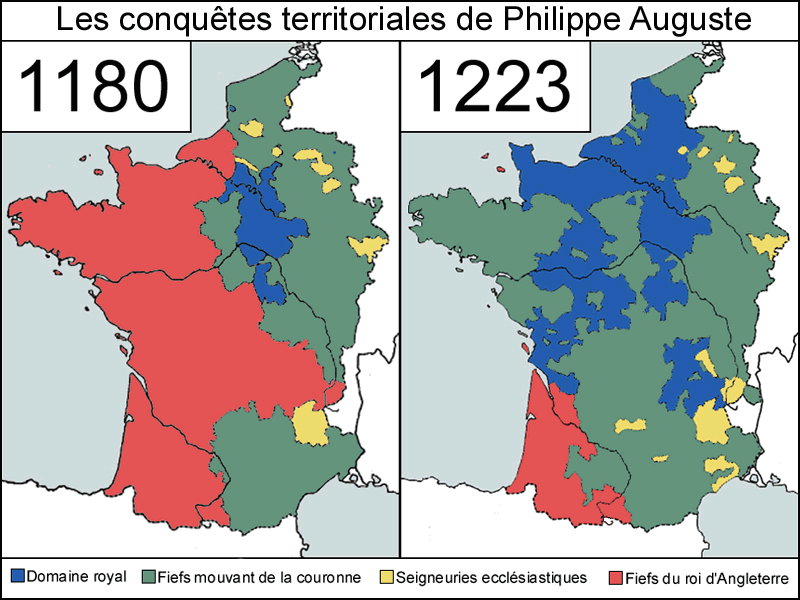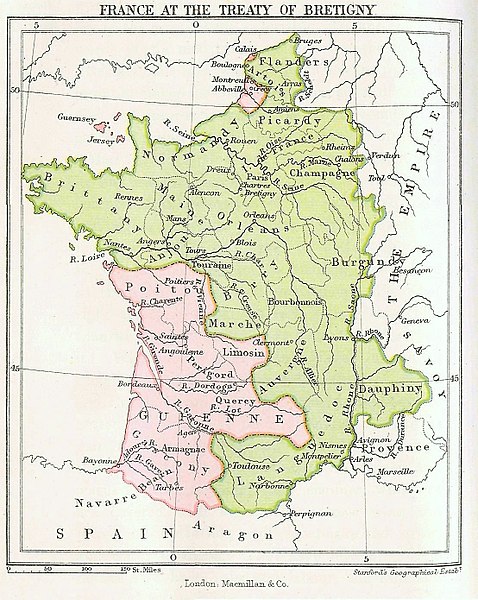
The realms of King Henry I of England, son of William the Conqueror, who was also Duke of Normandy.
Of course, in 1066AD, the Duke of Normandy, William (1066-1087AD), invaded England and became simultaneously the Duke of Normandy within the Kingdom of France, and King of England. Indeed, Normandy was still considered the more desirable of the territories, as William willed the Duchy to his eldest son and England to his second son! These territories would be reunited under the fourth son of William the Conqueror, Henry I (1100-1135).

A map of the massive holdings of King Henry II.
With the marriage of Henry II (1154-1189) to the heiress, Eleanor of Aquitaine, the Kings of England counted not only Normandy, but the massive domain of Aquitaine in southwest France as part of their realms.

This map of the conquests of Philip II Augustus of France -- notice the decline of English lands (red) from 1180 and the death of Henry II, and the holdings after the reign of John, which includes the loss of all of Normandy.
The son of Henry II, King John (1199-1216), however, did a great deal to lose those Norman lands. This was John "Lackland." King John had allied with an Imperial claimant, Otto IV. In 1214 the alliance of King Philip II of France & Frederick II vs. King John of England & Otto IV of

The pink in this map indicates the English holdings in 1360AD.
King Edward III (1327-1377AD), in the opening phases of the Hundred Years' War, would succeed in seizing the port of Calais, and the 1360AD Treaty of Bretigny, solidified English control of Calais and those lands in the southwest.
King Henry V (1413-1422AD) managed to take France to the brink with his 1415AD victory at Agincourt, and it looked as though the whole of France might slip under English control.
The reign of Henry VI (1422-1461, 1470-1471), however, saw the French chip away at English holdings. Indeed, it is during his reign that the Hundred Years' War is considered to have reached its conclusion in 1453AD, and England was left with Calais alone. He would then face the challenges of the Wars of the Roses!
Thus, when, during the reign of Queen Mary I Tudor (1553-1558AD), on 7 January 1558, the fall of Calais marked the end of a connection that reached back to William the Conqueror. This capture broke the heart of Queen Mary, and was part of a larger Italian War which pitted England and the Holy Roman Emperor against France.
An interesting tidbit: The English would retain the Channel Islands, Jersey and Guernsey, which is the basis for Queen Elizabeth II continuing to bear the title of Duchess of Normandy.
Live well!
No comments:
Post a Comment